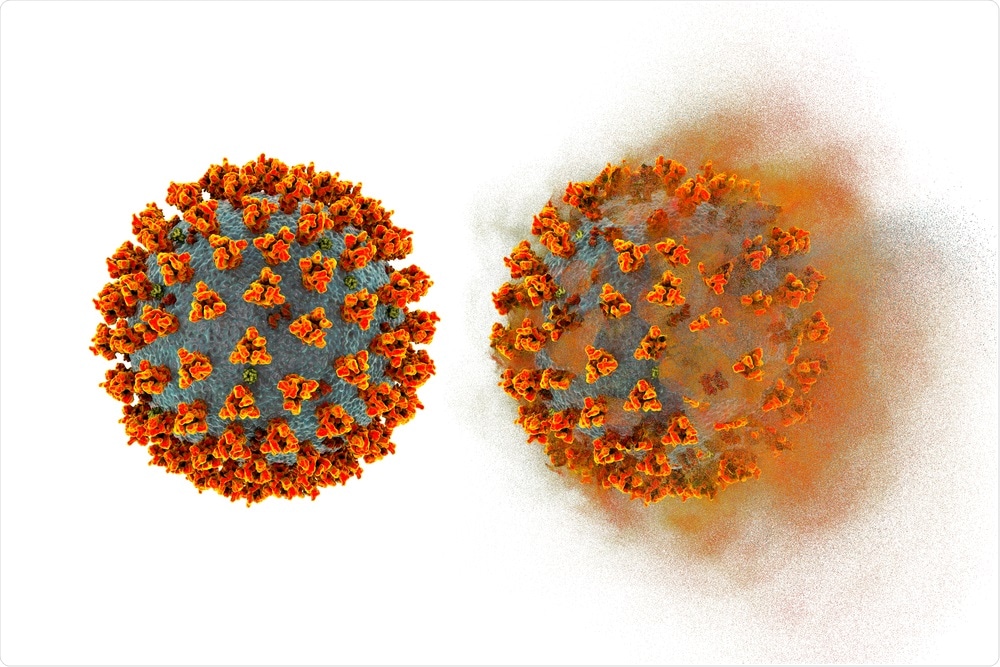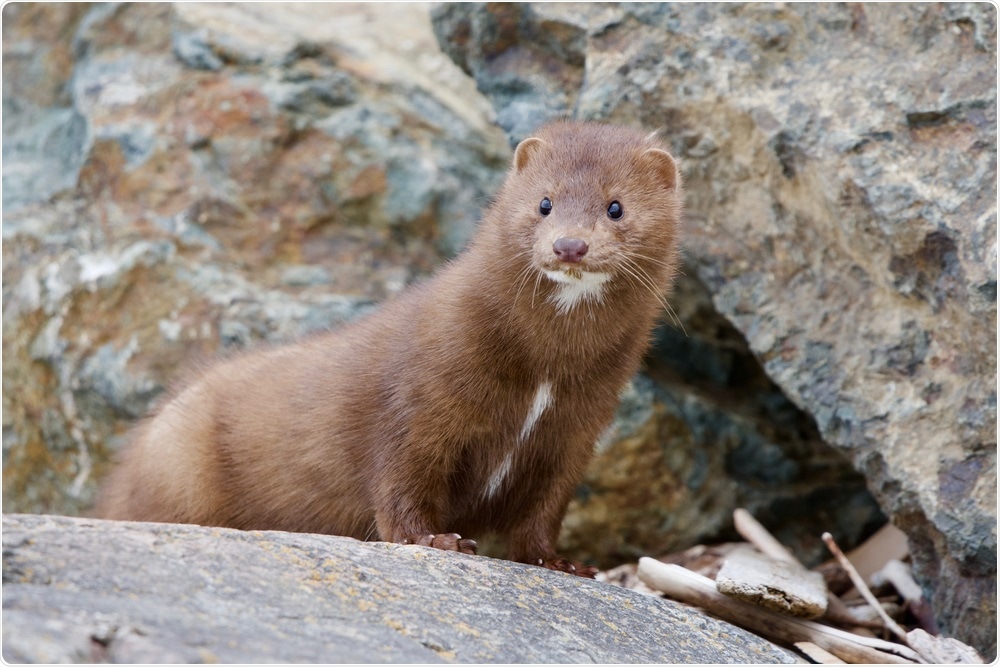Is it possible for humans to get infected by severe acute respiratory syndrome coronavirus 2 (SARS-CoV-2) from animals and subsequently transmit the virus to others? A recent study published in The Innovation evaluated the possibility of community transmission caused by a SARS-CoV-2 variant from an animal.
The coronavirus disease 2019 (COVID-19) pandemic has devastated the global economy by infecting over 178 million people to date and leading to the deaths of almost 3.9 million worldwide. While the virus is fast spreading and highly infectious among humans, it is also reported to naturally infect several other species such as cats, tigers, and minks.
 Study: Assessing the extent of community spread caused by mink-derived SARS-CoV-2 variants. Image Credit: Kateryna Kon / Shutterstock.com
Study: Assessing the extent of community spread caused by mink-derived SARS-CoV-2 variants. Image Credit: Kateryna Kon / Shutterstock.com
The transmission of SARS-CoV-2 between animals and humans
Previous studies reported the human-to-animal transmission of SARS-CoV-2 and discussed the possibility of the animals transmitting the virus back to humans. This is notable, as the replication of SARS-CoV-2 in animals can allow for various mutations to arise. For example, several mink-adapted mutations of SARS-CoV-2 have been identified, which include Y453F, F486L, and N501T.
“Since the cross-species transmission has occurred and the SARS-CoV-2 can be transmitted back to humans from minks, it is important to clarify whether the “back-to-human” SARS-CoV-2 with ongoing mink-adapted mutations could further lead to transmission among humans.”
To evaluate the extent of human-to-human transmission caused by mink-derived SARS-CoV-2 variants, researchers used publicly available SARS-CoV-2 genomic sequences and combined phylogenetic analysis with Bayesian inference under an epidemiological model. They derived the probability of direct transmission between humans being infected with mink-derived SARS-CoV-2 variants.
Confirming “back-to-human” transmission of SARS-CoV-2
Among individuals in Denmark and the Netherlands, the researchers found that at least 12.5% of all people infected with dominated mink-derived SARS-CoV-2 variants were caused by human-to-human transmission. This finding indicated a “back-to-human” SARS-CoV-2 variant that has already caused human-to-human transmission.
“We used publicly available SARS-CoV-2 genomic sequences from both humans and minks collected in Denmark and Netherlands, and combined phylogenetic analysis with Bayesian inference under an epidemiological model to trace the possibility of person-to-person transmission.”
Since the most dominated mink-derived SARS-CoV-2 genomes belonged to B.1.298 and B.1.8 for Denmark and the Netherlands, the researchers used only the human-derived and mink-derived SARS-CoV-2 genomes from these 2 lineages for Denmark and the Netherlands.
The researchers reported that the phylogenetic type of dominant strains in different countries was not consistent, thereby indicating that the cross-species transmission events of SARS-CoV-2 from human to mink were not lineage-specific.
“Several independent cross-species transmission events were identified in this study, which contained both human-to-mink and mink-to-human direction.”
Based on their observations, the researchers concluded that there were at least three direct transmission events identified in Denmark and the Netherlands, which accounted for at least 12.5% of all people infected with mink-derived SARS-CoV-2 variants in this study. However, they highlighted several reasons as to why they considered this observation of the extent of human-to-human transmission caused by mink-derived SARS-CoV-2 variants to be underestimated. The spillover happening between humans and minks could also be augmented by other animals in contact with humans.
Future outlook
Mink fur is mainly produced by Denmark, the Netherlands, Poland, and China, with the global mink farming industry having a net worth of billions of euros. Despite its size, the COVID-19 pandemic has severely affected this industry, particularly when tens of millions of minks were culled in efforts to mitigate the SARS-CoV-2 transmission, prevent further mutations, and the emergence of the mink-derived SARS-CoV-2 variants.
 Image Credit: Daniel Bruce Lacy / Shutterstock.com
Image Credit: Daniel Bruce Lacy / Shutterstock.com
The researchers of the current emphasized the need for monitoring the mink-derived and possibly other animal-sourced “back-to-human” SARS-CoV-2 variants. It is crucial to implement control measures tailored to avoid large-scale community transmission caused by the virus jumping between animals and humans.
These efforts will minimize the impact of the SARS-CoV-2 on the breeding industry, as increased mortality was detected in farmed minks that were positive to SARS-CoV-2 RNA,29. The implementation of effective changes will also decrease the probability of generating novel and unpredictable mutants of SARS-CoV-2 within animals.